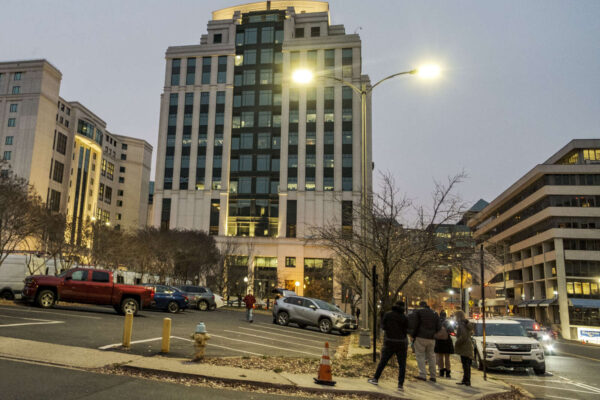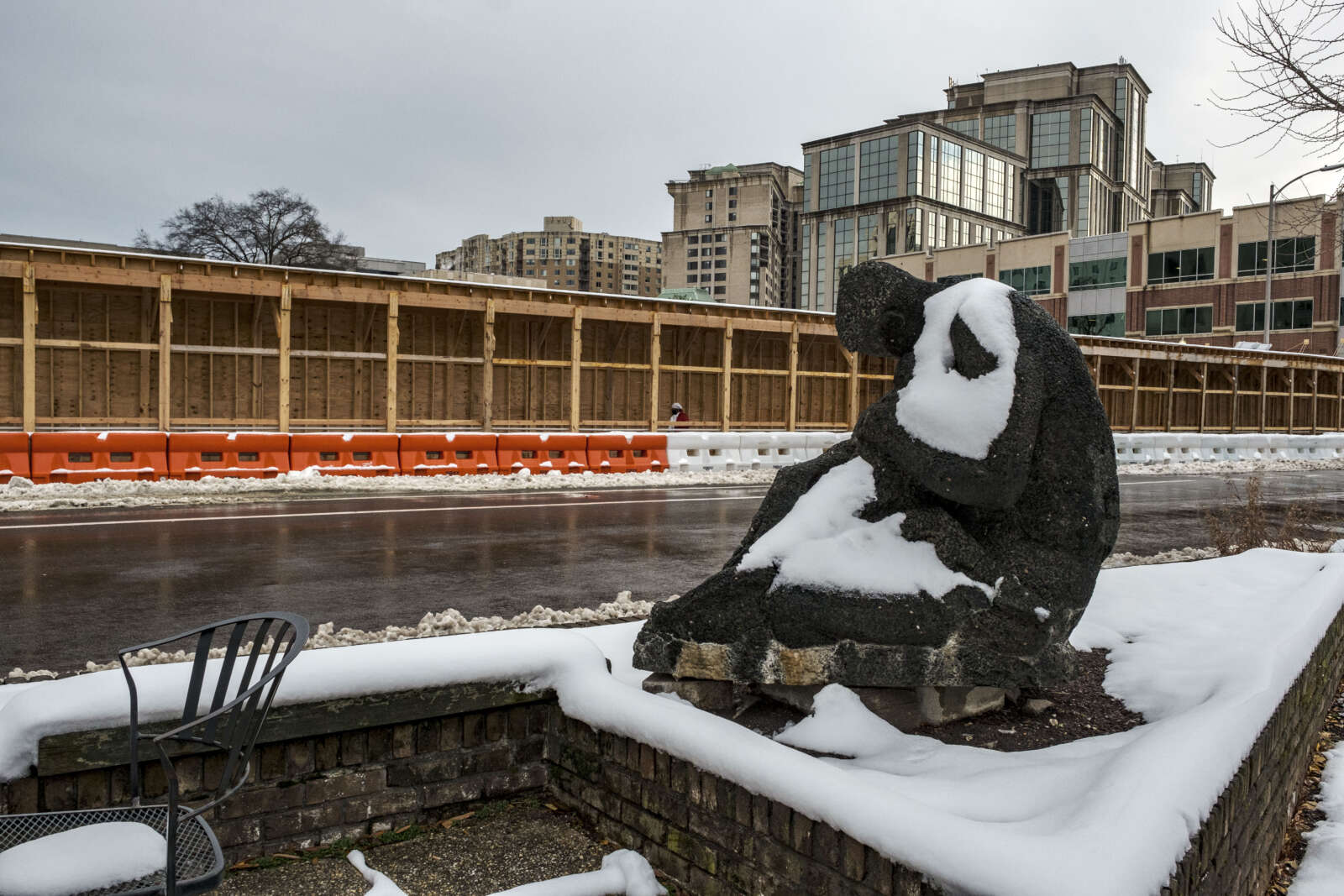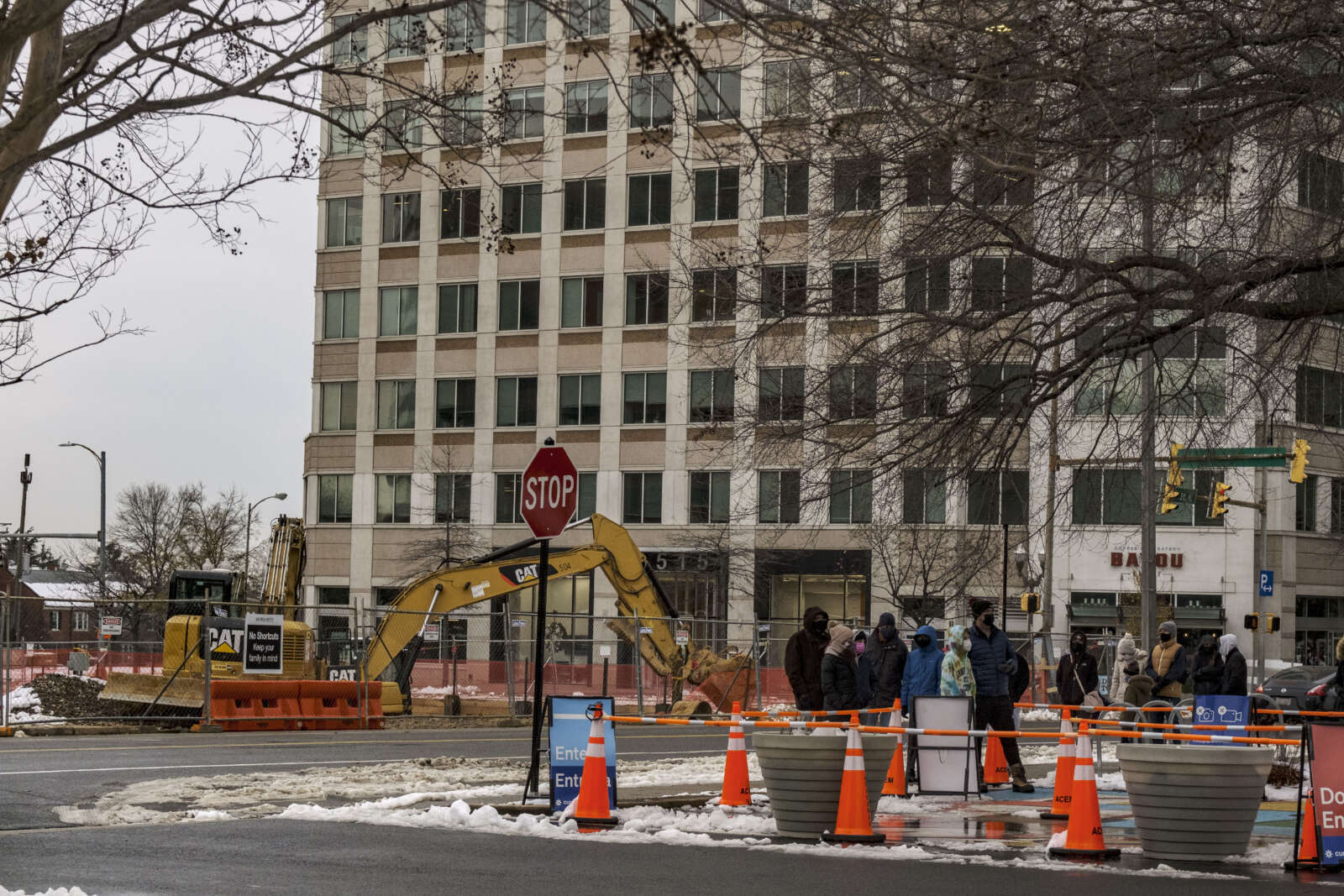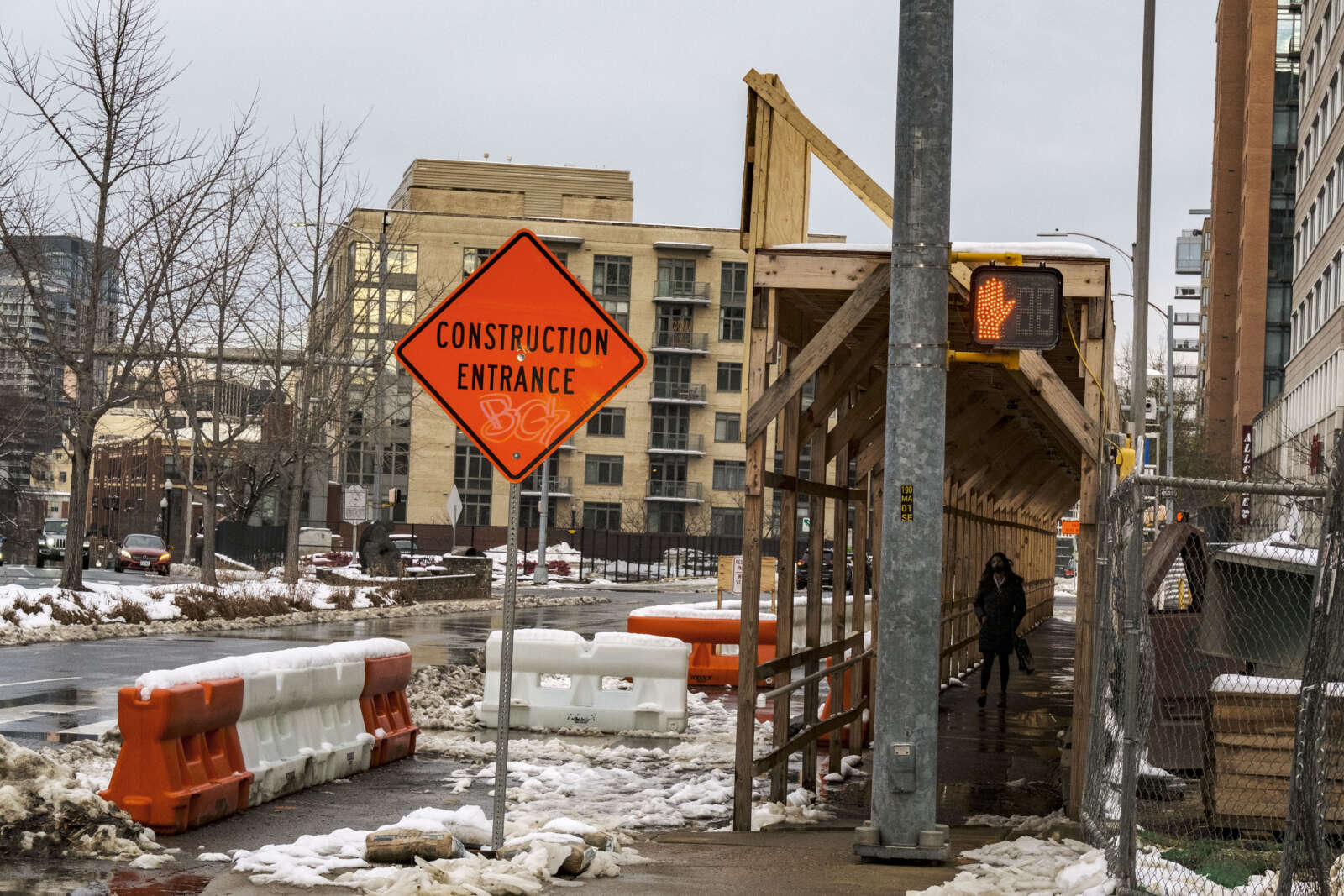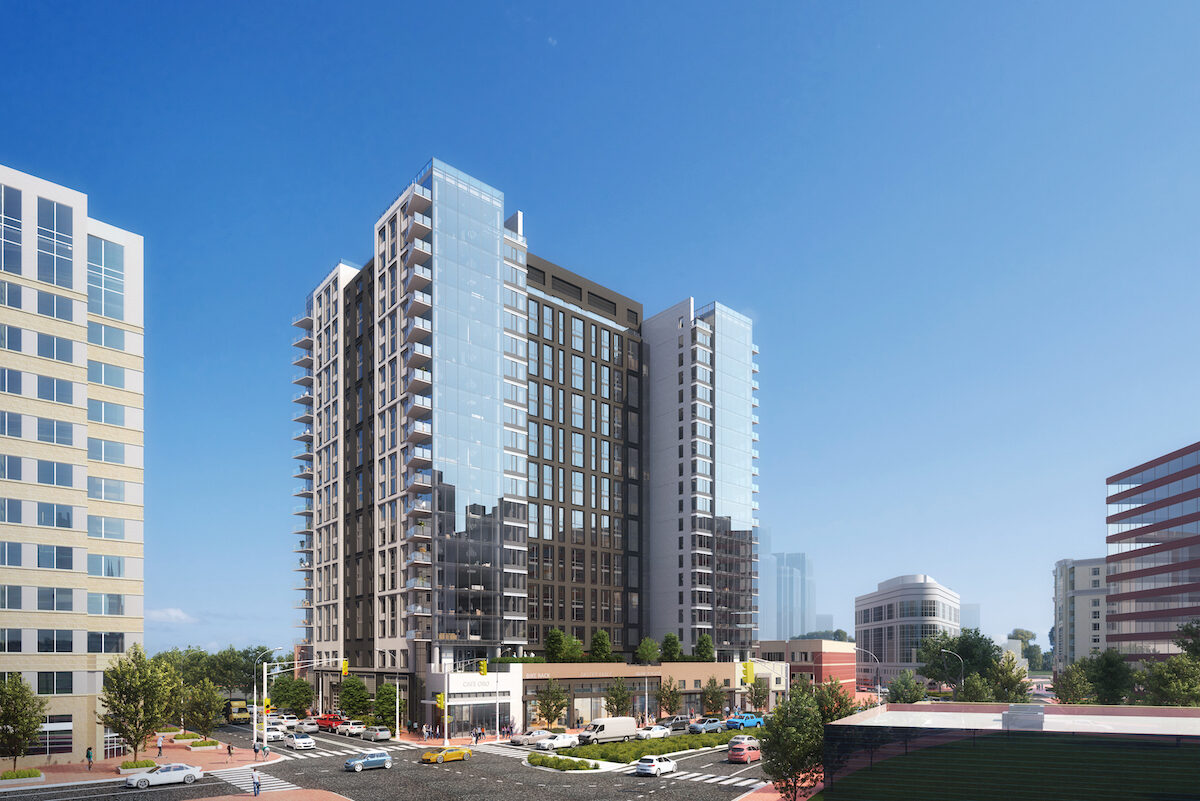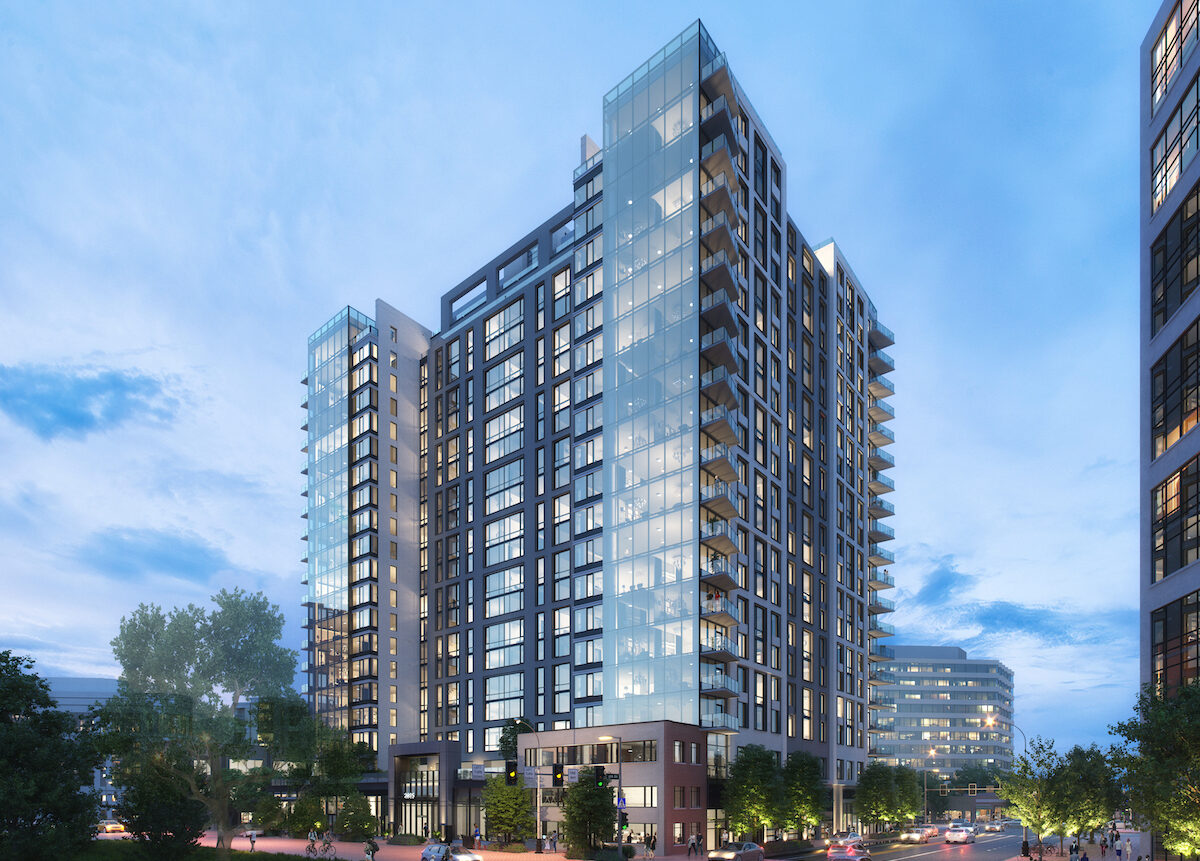An ongoing redevelopment project on the “Landmark Block” in Courthouse is poised to realize a significant portion of a 2015 vision to transform the neighborhood.
But beyond the “Landmark” project (2050 Wilson Blvd) by Greystar, there are no near-term private or public projects set to pick up wherever Greystar leaves off.
Over the next 20 years, Arlington County has plans to transform some of the mid-rise buildings, county facilities and the surface parking lot at the epicenter of the neighborhood into a vibrant area. Dubbed Courthouse Square, the area is bounded by Clarendon Blvd to the north, N. Courthouse Road to the east, 14th Street N. to the south and commercial buildings to the west.
The future Courthouse Square would feature a civic square for rallies and programs, new cultural and civic buildings, shared streets and a pedestrian promenade. Courthouse Square will be, visionaries said in a 2015 planning document, “where the revolution begins.”
Greystar is leading the charge with “The Commodore” apartments, which replace some brick buildings that housed Cosi, Boston Market, Jerry’s Subs and Summers Restaurant. But the revolution will only be fully realized after a few more county projects and private developments materialize.
“It’s a balance. The full vision will come together through public- and private-sector investment and actions,” says Anthony Fusarelli, Jr., the director of the county’s Department of Community, Housing and Development.
Part of the burden of redevelopment is on the county, which envisioned in 2015 building a new headquarters — after the county’s lease was set to end in 2028 — as well as up to two civic and cultural facilities. The then-looming end to the lease on the headquarters was the impetus for the 2015 Courthouse Square addendum, he said.
In 2018, Arlington County negotiated a lease extension until 2033, however, allowing the county to focus on renovations to its existing building and giving it an extra five years to start on new construction. The pandemic — and the changes it brought to the workplace — could mean a more modest approach instead of building a 400,000-square-foot building once envisioned in 2015.
“There’s been a massive forced experience about how people do work, whether they’re in a small business or a government agency,” Fusarelli said. “I think going forward in the immediate future, trying to pursue discrete development plans would be very challenging.”
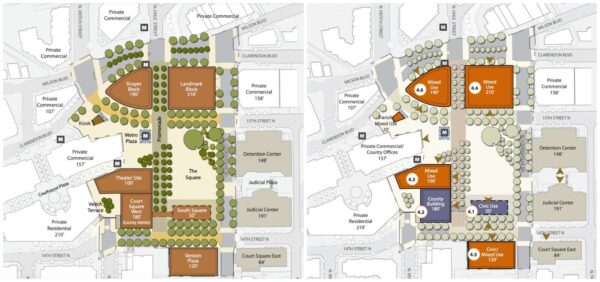
As for the cultural facilities, Arlington Cultural Affairs is still determining whether they’re needed after conducting an assessment in 2006.
“Informed also by the findings of our comprehensive 2017 Enriching Lives Arlington Arts and Culture Strategy, Arlington Cultural Affairs will continue to work with other County agencies to determine next steps,” the division said.
Meanwhile, of the privately owned sections, the Landmark Block is the only corner where a developer has expressed interest in redevelopment. (Across the street from Courthouse Square, Greystar is shepherding a 220-unit building on the vacant Wendy’s lot through county processes.)
“We worked hard to realize as many of the public benefits as we could through community benefits partly because we understood it may be some time, and there may be some uncertainty, [before] the next private development could come forward,” Fusarelli said.
On top of undertaking nearby streetscape improvement projects, Greystar pledged to deliver aspects of the plan as part of its community benefits package.
It will convert part of N. Uhle Street into a pedestrian-only promenade, with dining and public seating areas leading to the Courthouse Metro entrance, and resurface 15th Street N. to create the curb-less street used by motorists and pedestrians.
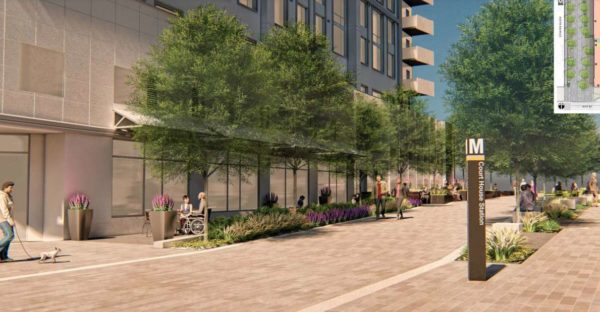
Greystar is also contributing to public art, making some updates to Wilson and Clarendon Blvd and making interim improvements to a small portion of Courthouse Square, Fusarelli said.
“The Landmark Block site plan is a good example of where working with a developer and with the developer’s pursuit of higher levels of development potential. In exchange, the county will be able to realize a number of improvements in the plan itself,” he said. “That being said, there are other elements which we’ve either just begun or really just not started.”
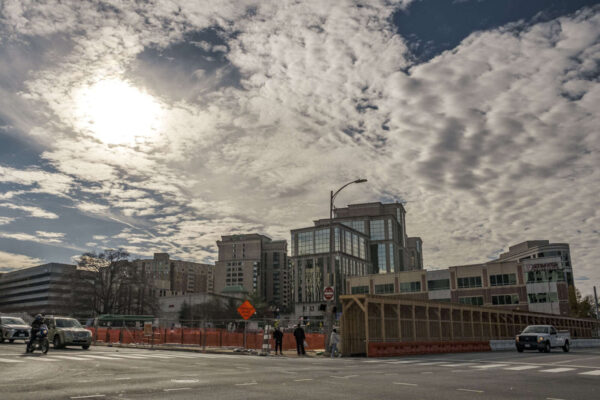
As for the other blocks identified in Courthouse Square, it’s been crickets from owners and developers.
“To date, there hasn’t been any really specific conversations with some of the pertinent owners,” Fusarelli said.
Lastly, improvements to the Courthouse Metro station will come in two parts.
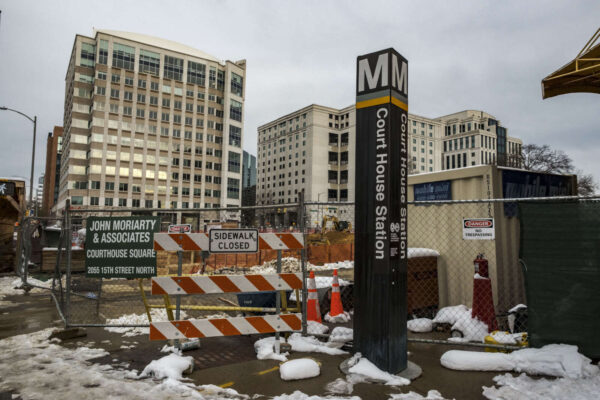
One half involves enhancing the connection between the station and a nearby parking garage, which the CPHD director says will likely be timed with turning the surface parking lot by county HQ into a plaza.
“A good portion of that parking is dedicated to uses associated with the judicial center and the courts and police,” Fusarelli said. “If any of those uses were to be displaced by realization of the Square, that’s a question that would need to be solved for: where does that parking go?”
Second, the Department of Environmental Services has been studying potential improvements to the elevators that connect the sidewalk in front of 2200 Clarendon Blvd with the fare gate level of the Metro station. A second elevator was budgeted in the 2019-2028 Capital Improvement Plan for the 2025-2028 fiscal years.
“Some of our assumptions that informed our 2015 plan change over time,” Fusarelli said. “We then are charged with exploring how those changed assumptions influence our perspectives on how to realize the plan.”
